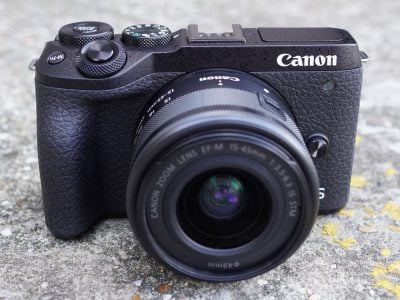Canon EOS M6 II review
-
-
Written by Gordon Laing
Intro
The Canon EOS M6 Mark II is a mid-range mirrorless camera with a 32.5 Megapixel APSC sensor, uncropped 4k video at 25 or 30p, 14fps shooting with autofocus, a tilting touchscreen and slide-on electronic viewfinder. Announced in August 2019, it replaces the two and a half year old M6 and effectively leapfrogs the M5 to become the flagship model in Canon’s EOS M series – at least for now. The M6 II body alone costs 869 pounds or 1119 pounds in a kit with the 15-45mm and slide-on viewfinder.
The M6 Mark II debuts a new APSC sensor, increasing the resolution from the 24 Megapixels of previous models to 32.5 Megapixels, making it the highest resolution to date in the APSC format. It’s coupled with Canon’s latest DIGIC 8 processor and sports the company’s Dual Pixel CMOS AF technology for confident focusing across most of the frame for both photos and video; the AF coverage is 88% horizontal by 100% vertical, and given an f1.4 lens will focus at light levels down to -5EV. The same sensor is used in the EOS 90D DSLR launched alongside the M6 II. The sensor is not stabilised in either body, so to iron-out any wobbles you’ll still need a lens with optical stabilisation like the 15-45mm kit zoom.
The M6 Mark II can shoot bursts at up to 14fps with continuous autofocus, or up to 30fps in the RAW Burst mode first seen on the G7X III and G5X II which also includes a useful pre-buffering option. There’s uncropped 4k video at 24, 25 or 30p, as well as uncropped 1080 video up to 60p, all with autofocus, while a high speed 1080 option films at 100 or 120p with fixed focus and a crop. Vloggers will appreciate a screen that can flip up to face them and a microphone input, although mounting a mic on the hotshoe will block the screen. The hotshoe also supports the same EVF-DC2 electronic viewfinder accessory as the original M6, included in some Mark II kits or sold separately. In my full review, available in video or written form below, I’ll show you around all the features of the new camera, how it compares to key rivals and of course take an in-depth look at the photo and video quality of the new sensor. Below this is a separate video detailing the M6 II’s capabilities for vlogging for those who desire more detail in that regard, and as always you can click through to my quality, samples or verdict pages using the tabs above!
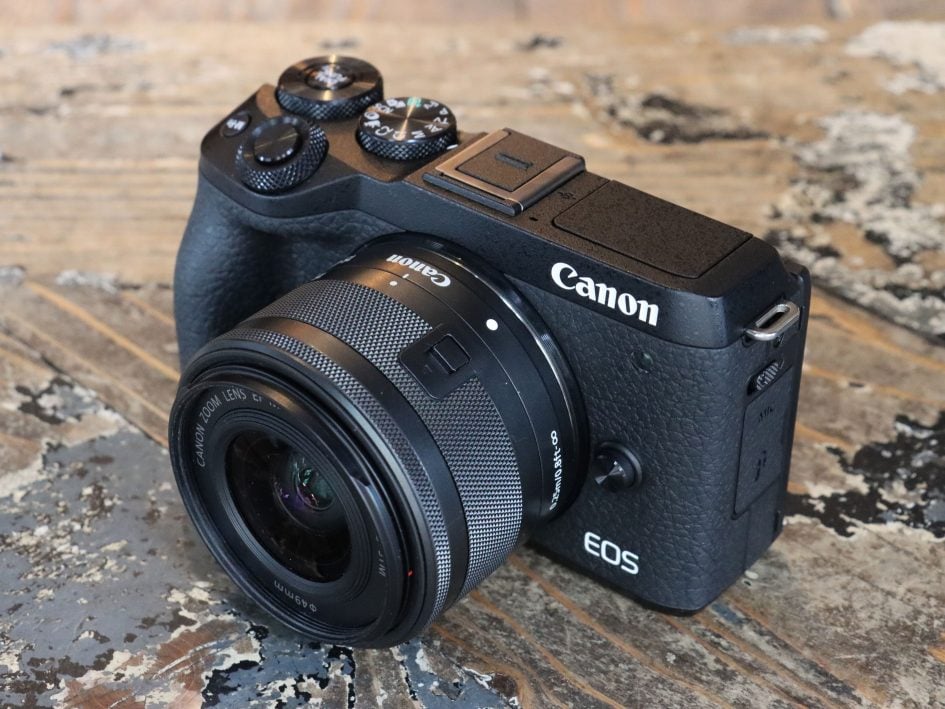
Above: At first glance the M6 Mark II looks a lot like its predecessor, and while it’s a pretty light and compact camera weighing 408g with battery but no lens, it sports a decent grip and feels very comfortable in your hands; I’d say it has the best grip and controls of its peer group, but there’s sadly no claims of weather-sealing.
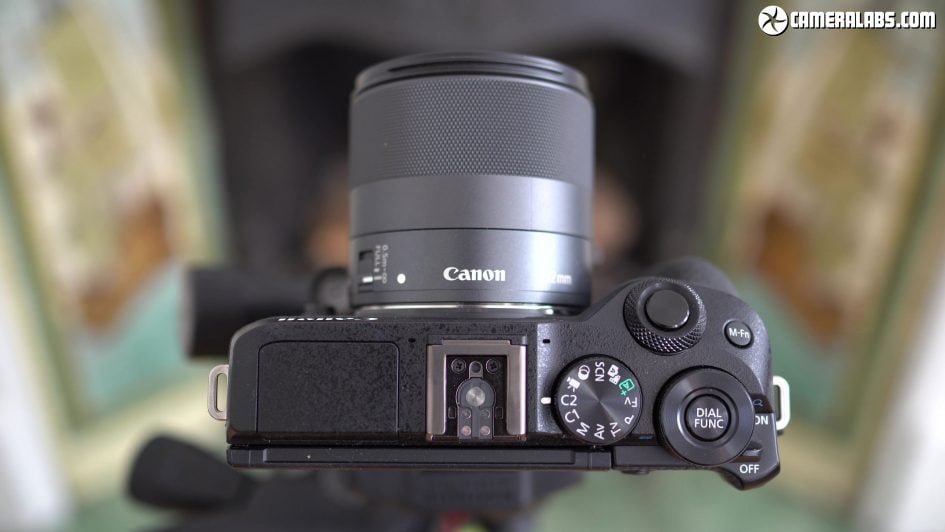
Above: From the top, eagle-eyed Canon followers will notice the dedicated exposure compensation dial of the original model has now gone, but that the M6 II still retains the chunky power switch and two control dials which provide really nice clicky feedback. Turning the large thumb dial will adjust some aspect of the exposure depending on the mode, but holding down the Function button in the middle gives you quick access to ISO, drive, AF, white balance and flash compensation settings. Both dials are also easily adjusted when holding the camera one-handed.
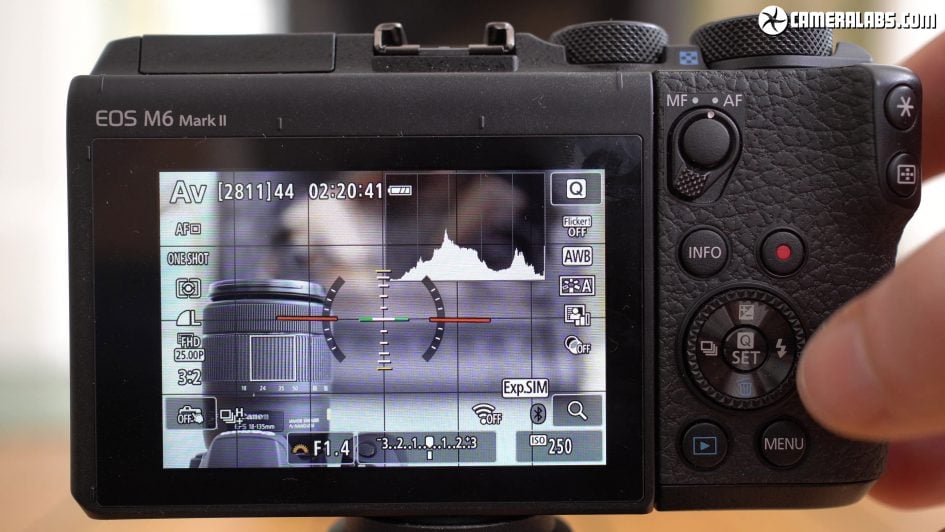
Above: Round the back, the control layout is the same as before, including a thumbwheel, although now with the classy addition of a focus collar with an AF ON button in the middle. There’s still no AF joystick, but you can use the 3in touchscreen as a touchpad when composing through the optional viewfinder, and thanks to the viewfinder’s protruding housing, you’re unlikely to accidentally tap the screen with your nose.
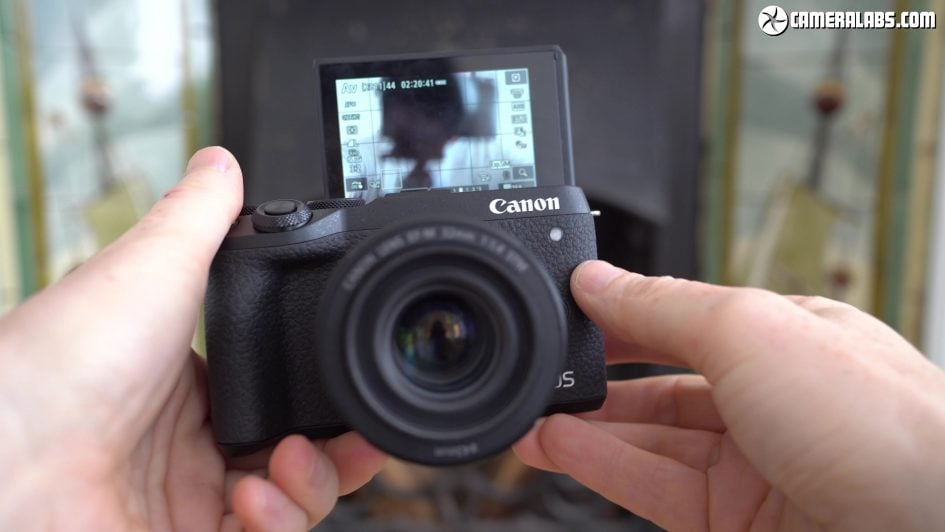
Above: As before, the touchscreen can angle down by about 45 degrees for easier framing over your head, or up by 180 degrees to face you for selfies or vlogging, although obviously if you have anything mounted on the hotshoe, like a microphone, a flash or the viewfinder, you’ll block the screen. This is a similar approach to the Sony A6400, but unlike that model I found I couldn’t even slide on the Rode Wireless Go receiver and angle the screen up sufficiently for vlogging.
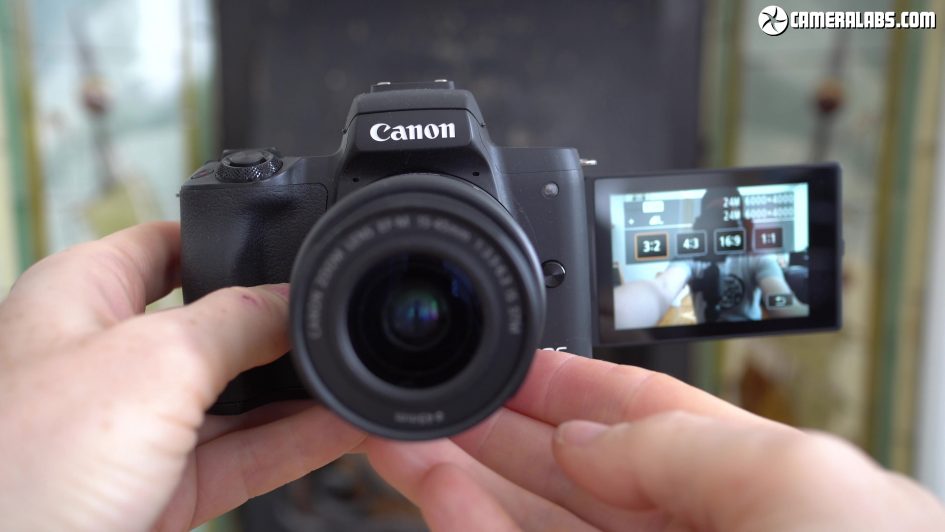
Above: Compare the screen articulation with the EOS M50 which employs a side-hinged display, allowing it to flip out and face any direction without being blocked by the hotshoe. Sure it requires a slower flip and twist motion to face you and that also makes it less discreet then the simple vertically-tilting alternatives, but if you’re into vlogging or even just shooting in the portrait orientation at high or low angles, a side-hinge is preferrable.
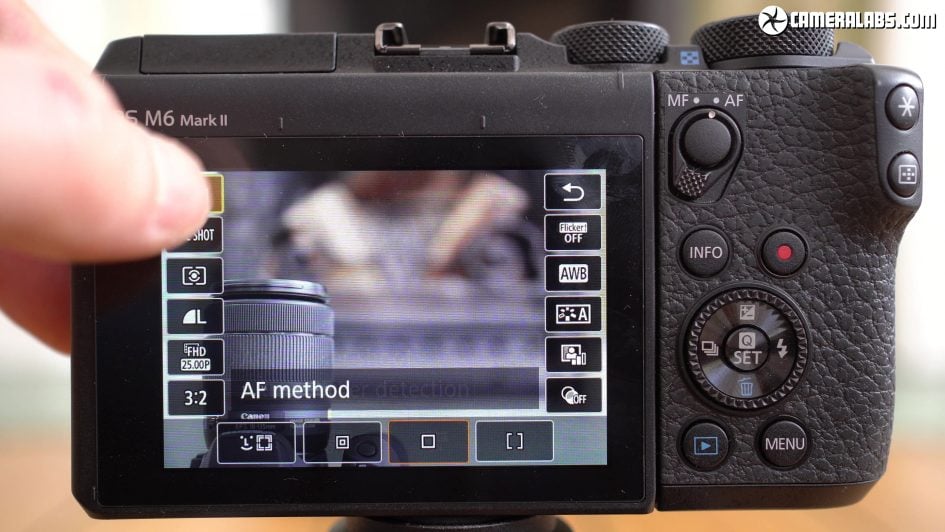
Above: Canon does however make way better use of its touchscreen than Sony, not just allowing you to tap to reposition the AF area or pull-focus while filming, but also to navigate both the Quick menu and the main menu pages, as well as swiping through images in playback and pinching to enlarge. You can of course use the physical controls if you prefer.
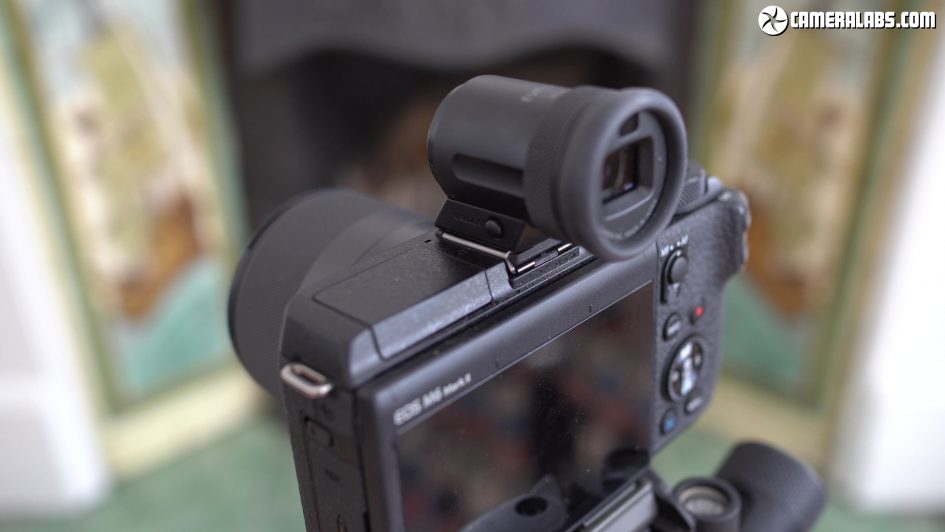
Above: The M6 II, like its predecessor, does not have a built-in viewfinder, but does support the same EVF-DC2 accessory, available separately for about 200 bucks or in the box in some kits. Two and a half years ago, its 2.36 million dot OLED panel was respectable, but today it’s looking a little coarse compared to more detailed modern panels. I’d have preferred a new, higher resolution option, or better still for the viewfinder to be built-in, although that would have made the basic body larger and more expensive, and presumably will be reserved for an M50 successor – and to be fair, the spec matches the A6400 and X-T30. Design-wise, while the narrow hotshoe mount of the viewfinder accessory has allowed Canon to squeeze-in a mode dial alongside the two control wheels on the M6 II, it does make the camera much taller overall and requires a bigger bag to accommodate it fitted – and again you’ll need to remove it anytime you want to vlog or take a selfie. You should also take the price of the viewfinder accessory into consideration when comparing the M6 II to models which have one built-in, like the Sony A6400 and Fujifilm X-T30.
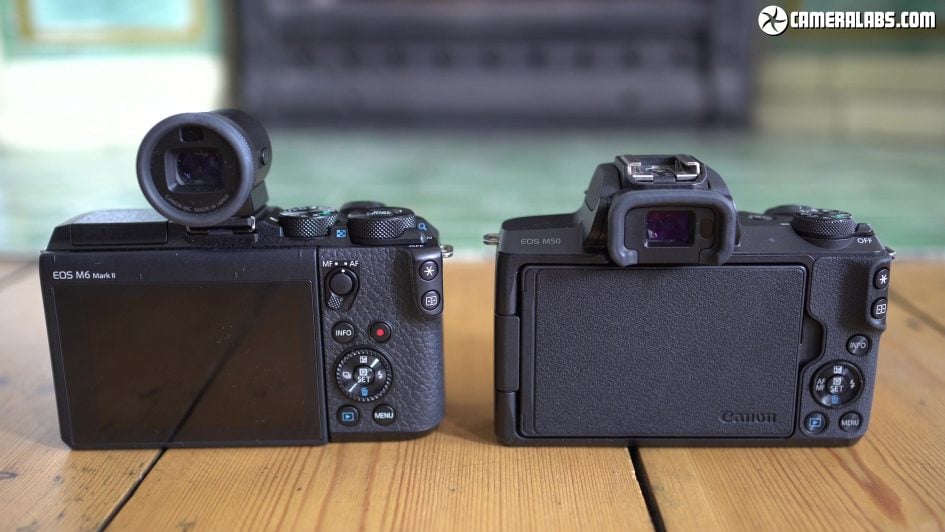
Above: With the older M50 in-mind, here it is on the right next to the M6 II for comparison. I’ve always had a soft spot for the M50 body – it’s really cute like a shrunken 80 or 90D, retaining the viewfinder and flip screen. And those are the most obvious benefits it has over the M6 II and since some of the viewfinder electronics can be housed within the main body, it’s striking how much shorter it can be compared to the M6 II when its viewfinder accessory is fitted. That said, the controls of the M6 II are much better with three dials compared to just one on the M50, as well as that focus collar switch. Both cameras have surprisingly good grips for their size, but while they share a similar shape, I prefer the textured coating of the M6 II. It definitely feels like a higher-end camera in your hands, and again to me personally I found its grip and controls superior to the Sony A6400 and Fujifilm X-T30.
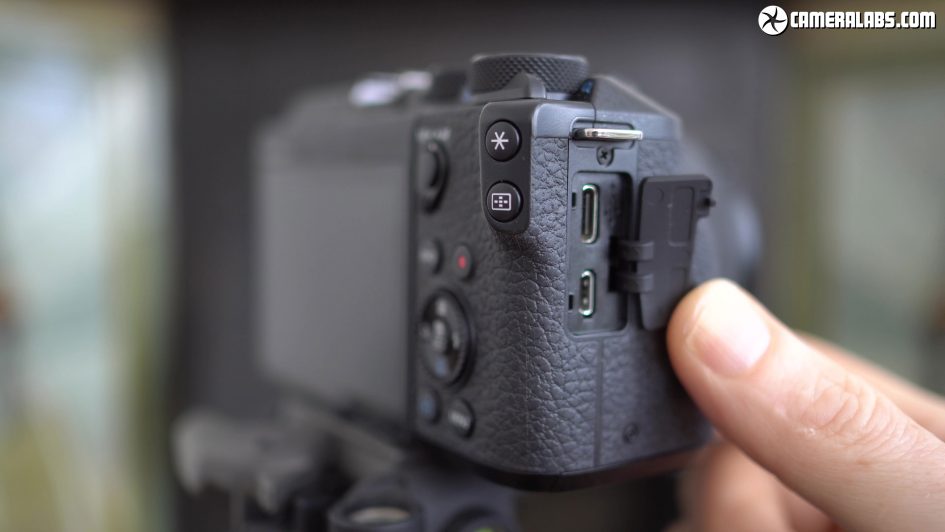
Above: Behind a flap on the right hand side are Micro HDMI and USB C ports, the former delivering a clean output and the latter allowing you to charge the battery in-camera, although like other recent Canon bodies there’s no power delivery for operation under USB and it’s also very fussy about the charger too. It worked fine with my Apple MacBook charger, but nothing else I tried. Indeed by not supporting most third-party USB chargers, Canon’s port effectively becomes proprietary, but in some consolation an AC charger is at least supplied for those who prefer to do it outside the body. But contrast it with Sony’s A6400 and Fujifilm’s X-T30 which are happy to be charged and powered by almost any USB source. It’s also worth mentioning the Fujifilm X-T30 boasts 10-bit output over HDMI, a feature Canon and Sony don’t support here.
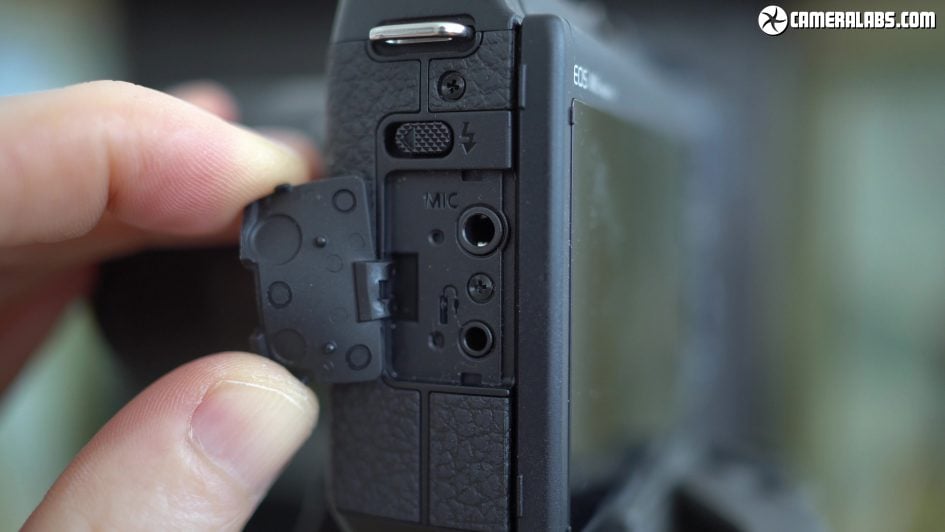
Above: Meanwhile on the left side you’ll find a remote cord jack and a 3.5mm microphone input, although again if you mount a mic on the hotshoe, it will block the screen from facing forward; like Sony’s A6400 though, you could always connect a wired-lav microphone. Note like most models at this price, there’s no headphone jack, although I’d love for all cameras with USB-C ports to support a headphone adapter like the Fujifilm X-T30.
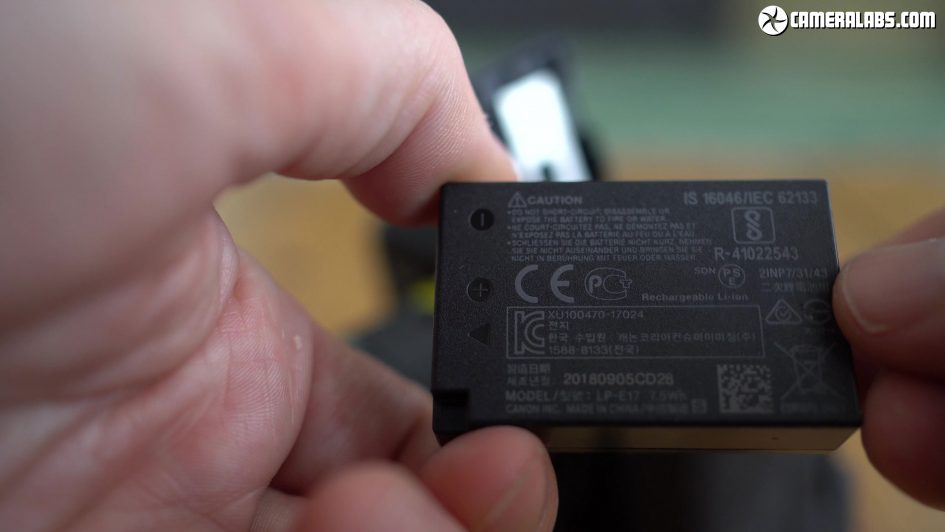
Above: The M6 Mark II is powered by an LP-E17 pack that’s good for around 300-400 photos or a couple of hours of video; I managed to film just over two hour’s worth of 1080 video on a full charge, although found the camera overheated after about 45 minutes worth of 4k. The compartment is also where you’ll find the single SD card slot. No chance of dual slots on a body this size, especially from Canon which hasn’t even equipped the new 90D with the capability.
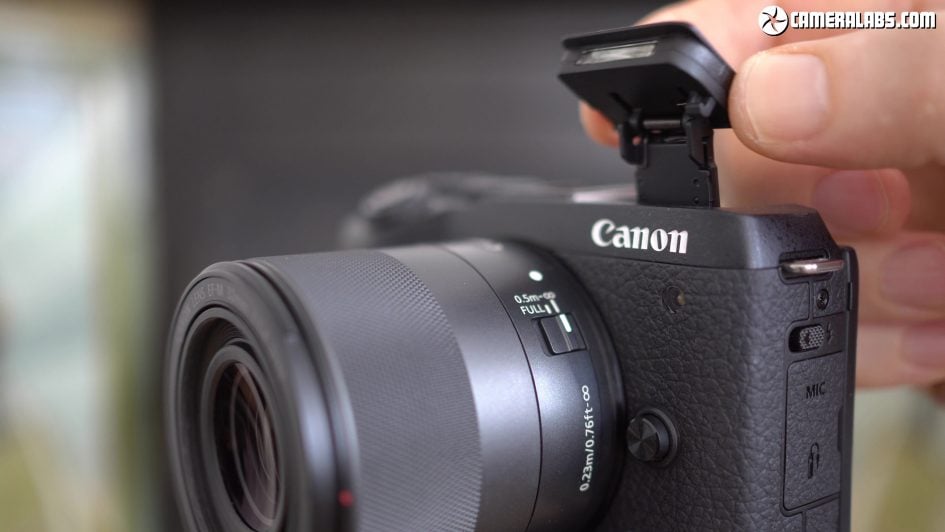
Above: And finally the EOS M6 II is equipped with a popup flash which can be angled back by hand for an improvised bounce – try doing that with the 90D or M50. The hotshoe can also accommodate speedlite flashguns and of course has the pins to support the viewfinder accessory. I wonder if they’d ever add the pins to a DSLR for those who fancy using a viewfinder in Live View?
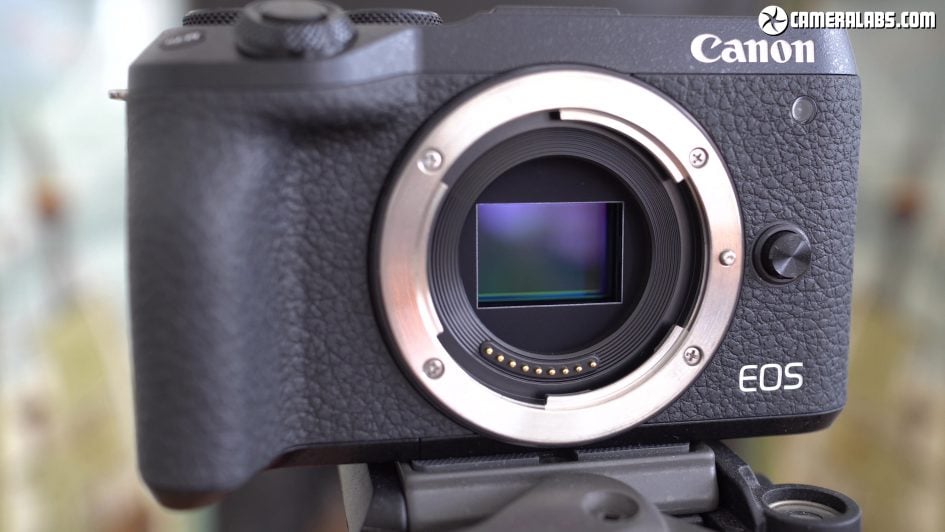
Above: In terms of lenses, the M6 II is equipped with an EOS M mount which allows it to use EF-M lenses (just ten native models from Canon at the time I made this review, although Sigma is releasing its triplet of f1.4 primes in the EF-M mount) or any EF DSLR lens with the optional EF to M adapter; RF lenses for Canon’s full-frame mirrorless system are not compatible with EOS M nor vice versa. Any lens you mount on the M6 II has its field of view reduced by 1.6 times due to the sensor size.
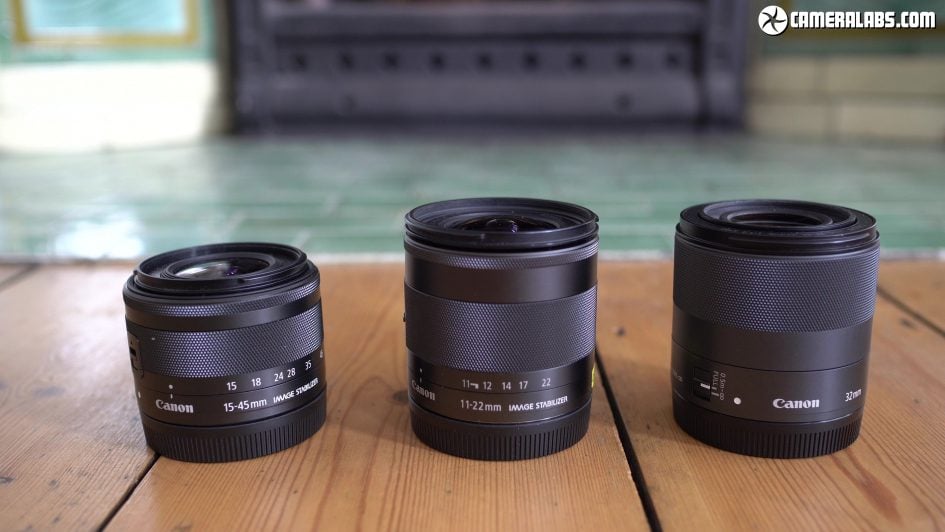
Above: The first lens you’re likely to use on the M6 II is the EF-M 15-45mm f3.5-6.3 kit zoom, which provides a useful range that goes wider than most at the short-end and also collapses to a tiny size. Vloggers, landscape and architectural photographers will like the EF-M 11-22mm f4-5.6 here in the middle, again impressively compact and like the 15-45mm zoom, featuring optical stabilisation. If you want to make the most of the high resolution sensor though, the only native lens to really deliver sufficient quality is the EF-M 32mm f1.4 prime on the right. It may not be stabilised, but the quality is way ahead of the zooms and there’s much greater opportunity for shallow depth of field effects. Every M6 II owner should have this lens, and every EOS M owner should consider it. I’m also looking forward to trying the Sigma primes in the native mount.
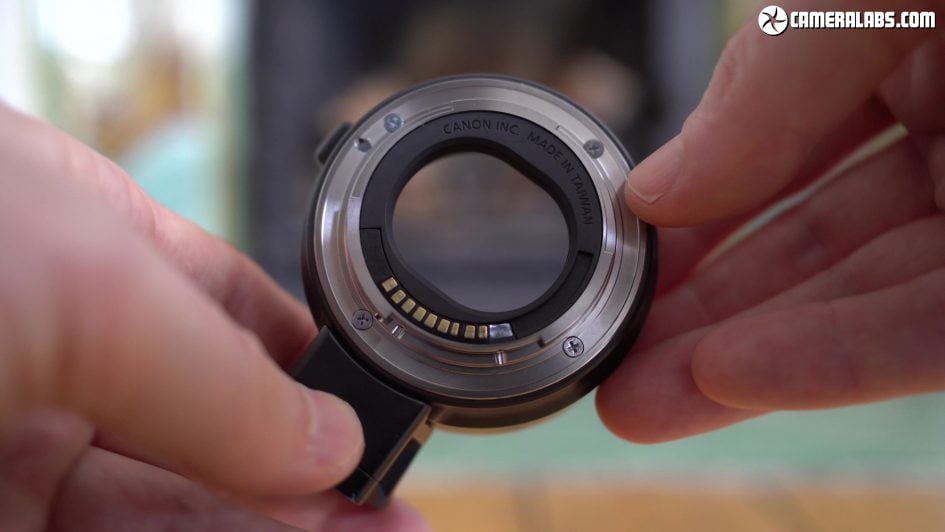
Above: As I mentioned a moment ago, you’re not just limited to choosing from the handful of native EF-M lenses. The optional EF-EOS M adapter lets you mount any of the EF or EF-S DSLR lenses, giving you access to an enormous range of models not to mention a strong second hand market; you may already have some of your own too. Crucially the EOS M bodies also do a great job at focusing adapted lenses and I’ll show you some examples later, but of course the adapter does add to the size of the system and most of the EF and even the EF-S lenses are bigger to start with too – here’s the ultra-wide EF-S 10-18mm for example, a cheaper alternative to the EF-M 11-22mm but one that’s much larger especially with the adapter. Having such good support for adapted lenses is partly a blessing because of the sheer variety of options and prices available, but equally a curse as it means Canon’s not been particularly incentivised to broaden its native EF-M catalogue – after all, ten native lenses in seven years makes it one of the most neglected systems around. So, does adapting DSLR lenses get Canon off the hook or would you like to see more native options? At least Sigma’s finally joining in. Let me know in the comments.
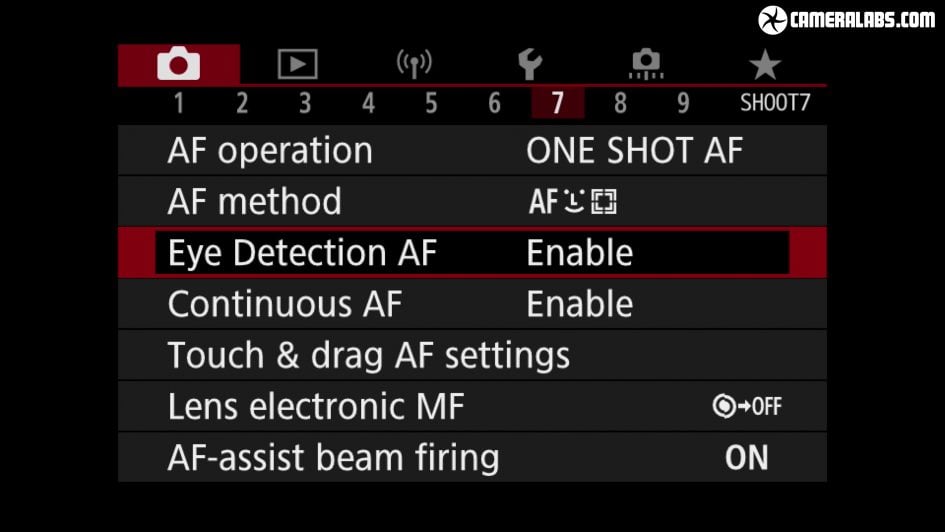
Above: Moving on, the EOS M6 II employs Canon’s Dual Pixel AF for autofocusing, a brilliant technology that can effectively turn most of the sensor into a confident phase-detect array that rarely if ever hunts or overshoots, while also avoiding the potential for banding or other artefacts of rival systems that permanently sacrifice some of their imaging pixels to focusing. Canon’s had the technology for a number of years now, but the M6 II and 90D are its best yet implementation with 100% coverage vertically and 88% horizontally depending on the lens. The AF system works at light levels down to -5EV with an f1.4 lens and supports zoned areas, single and spot areas, or face with tracking. Eye detection is now available and works with continuous Servo AF, and the M6 II can also autofocus while shooting bursts at its top mechanical speed of 14fps, edging ahead of Sony’s A6400 in speed.
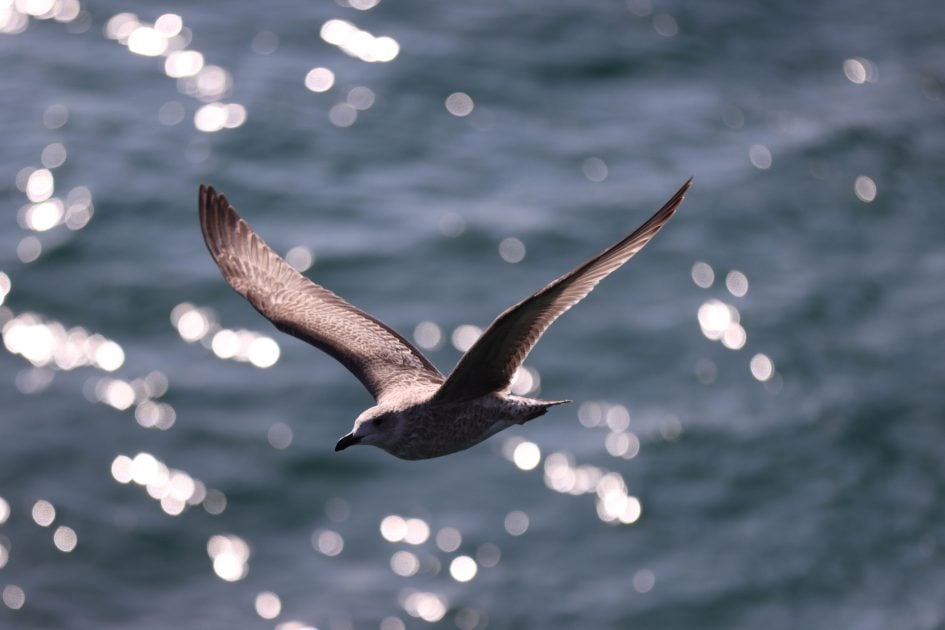
Above: I’m delighted to report the M6 II also does a fine job focusing adapted lenses, indeed to degree you can use them for serious action and wildlife photography. I took a bunch of bursts with the M6 II fitted with the EF 70-200mm f2.8L IS USM Mark II lens mostly at 200mm f2.8, where the camera still managed to deliver a decent hit rate at 14fps. Sure the lens is way-oversized for the body, but in this case you generally hold and aim with the lens barrel rather than the camera body itself, and so long as you have the viewfinder fitted, it’s easy to follow the subjects. I had the focusing area set to the whole sensor when the birds were against the sky, occasionally switching to tighter zoned areas when there was a busier background, and in each case I was struck by the success rate, and in particular how much more successful it was than the EOS 90D when the DSLR was using its optical viewfinder AF system. In fact I’d say it’s the best Canon camera I’ve used for birds in flight below the 7D Mark II, and of course shoots faster and with broader AF coverage. I’d say Sony’s AF system on models like the A6400 still has slightly better tracking and finer points, but doesn’t shoot as fast and also lacks the pre-buffering option of the RAW Burst mode I’ll talk about in a moment. As such the M6 II really does become a compelling option for bird photography, and is surprisingly more successful than the 90D in this regard.
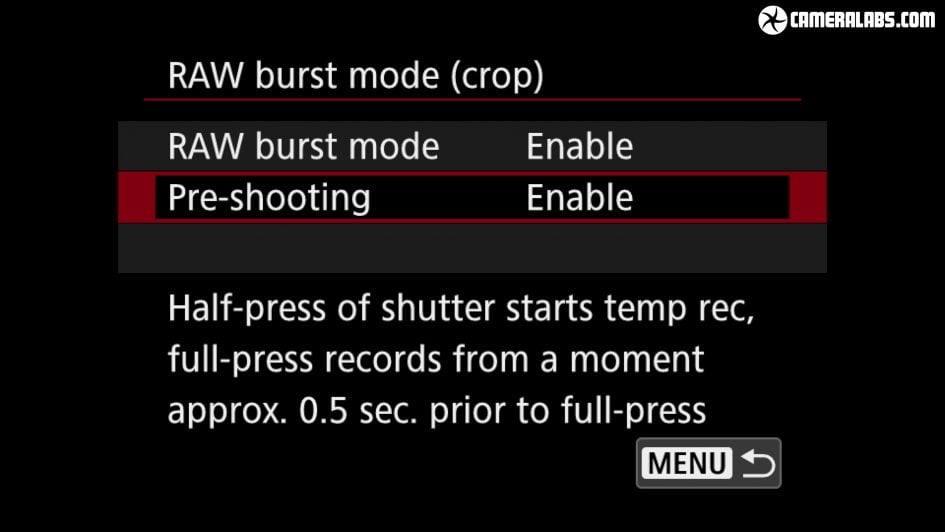
Above: The M6 II also inherits the RAW burst mode first seen on the PowerShot G7X III and G5X II which captures a fast burst of RAW files at 30fps, but now also supporting continuous AF. Like the PowerShots, you can select a pre-buffer option which, with a half press of the shutter, keeps a rolling buffer of the last half-second’s worth of action, then when you push down fully these last 15 shots are committed to memory along with whatever followed. This effectively allows you to rewind the brief moments before fully pressing the shutter ensuring you don’t miss the decisive moment. Note the RAW burst mode does apply a crop with a resulting image size of around 18 Megapixels and the speed means it also has to use an electronic shutter which can suffer from skewing artefacts. Now let’s see it in action.

Above: Each RAW burst is stored as single large file on your card and navigated during playback on the camera. Here’s one I took consisting of 37 shots, while the notch on the timeline indicates the moment I pushed the shutter. You can then use the rocker control to go forwards through the sequence or of course backwards up to half a second before you pushed the button – so long as you had it half-pressed before-hand. In this instance it’s allowed me to view the moments before the block hit the water and choose the perfect frame. You can then simply extract the desired image, impressively in JPEG or RAW format, and you can repeat as many times as you like.
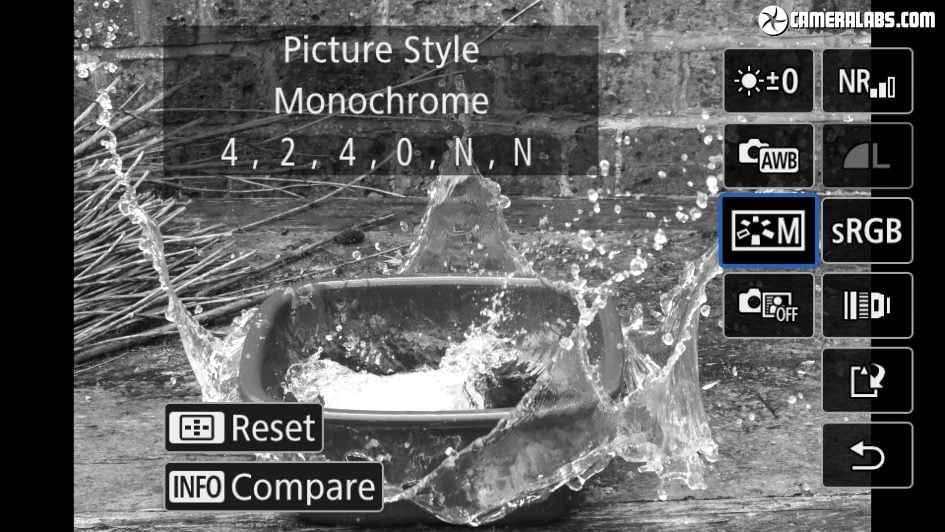
Above: Since most Canon cameras allow you to process RAW files from the playback menu, here’s an example of what you can do with one of the RAW files I extracted from the burst. You can adjust the brightness, white balance, picture style, image resolution and a bunch of corrections before outputting a new JPEG and of course this is available on any RAW file you capture with the camera, not just bursts.
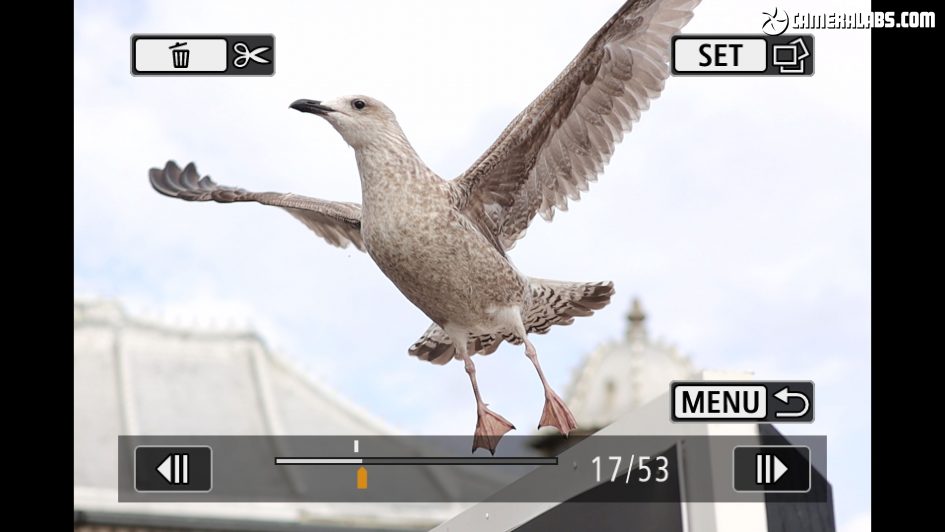
Above: Here’s another example, this time with Brighton’s seagulls. I find pre-buffering invaluable for bird photography as it allows you to never miss the moment when the bird takes flight or has an incident with another creature. So long as you’ve dutifully kept the shutter release half-pressed as you wait for the action and push it fully the moment it happens, you know you’ll have a bunch of shots in the bag leading up to it. Then just shuttle through the sequence to find the perfect moments. Even though the images are recorded at 18 Megapixels and the electronic shutter is susceptible to some skewing, the RAW burst capability is a key advantage the M6 II has over the A6400 and even Canon’s own 90D which strangely lacks the feature in Live View. And while Panasonic offers something similar in 4k / 6k Photo, it’s limited to JPEG extraction only and effectively has no continuous AF. Fujifilm’s X-T30 also has a pre-burst option.
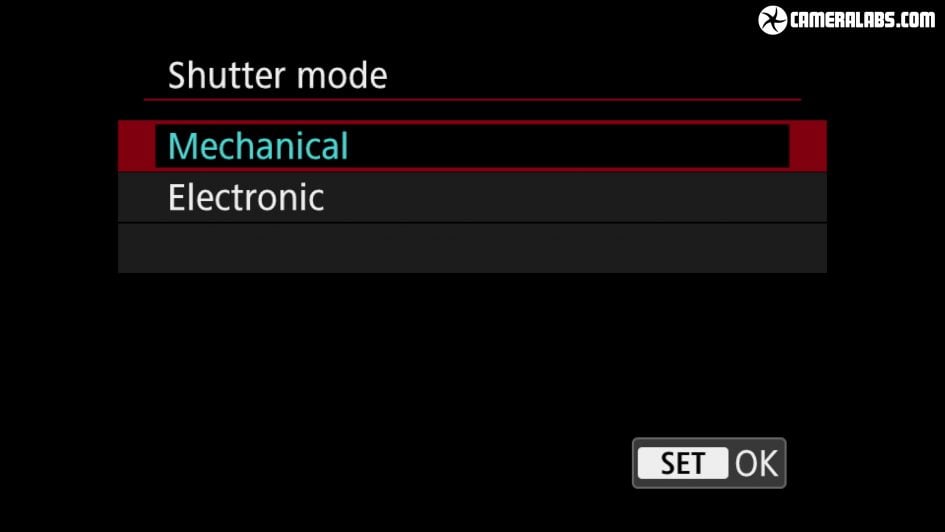
Above: Moving onto the shutter options, the EOS M6 II offers the choice of a mechanical shutter with a top speed of 1/4000, or a fully electronic shutter which operates in complete silence with shutter speeds up to 1/16000. The electronic shutter may be sound and vibration-free, but doesn’t work in bursts and like most electronic shutters can suffer from skewing if the camera or subject are in motion.
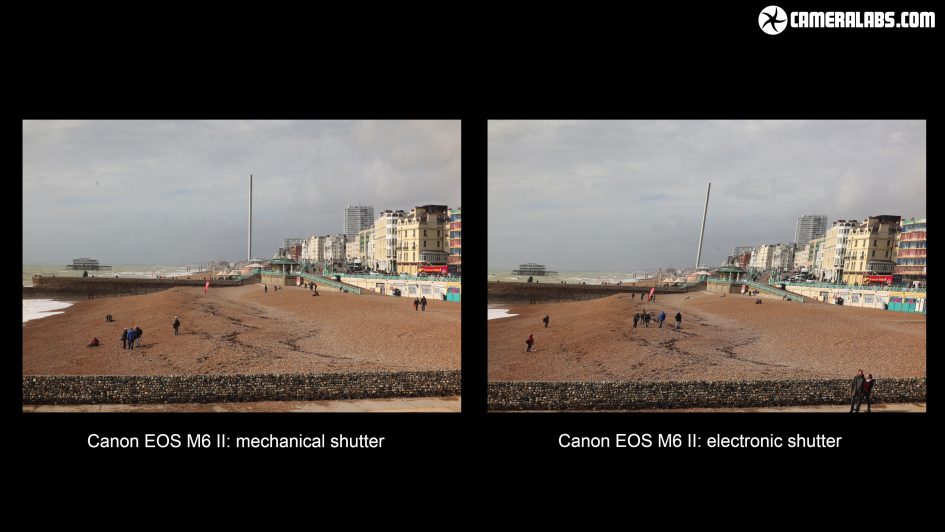
Above: To illustrate this effect, here’s a photo I took while panning the camera using the mechanical shutter and as you’d expect the tower in the distance is a vertical line. Now for the same shot taken with the electronic shutter at the same panning speed and the difference is clear with the tower leaning to the side. Now to be fair, this is no worse than most rival models, and in fact preferable to the Sony A6400’s significant rolling shutter. I should also add the M6 II and 90D also suffered from less skewing than many when filming movies which I’ll show you in a moment, but for now section, just be careful when using the electronic shutter for stills.

Above: If the subject or camera are static though, the electronic shutter can be useful not just for discreet shooting, but also deploying large apertures under very bright conditions. For example I needed to use the maximum shutter of 1/16000 to allow me to shoot this image at f1.4 on a sunny day, even at 100 ISO.
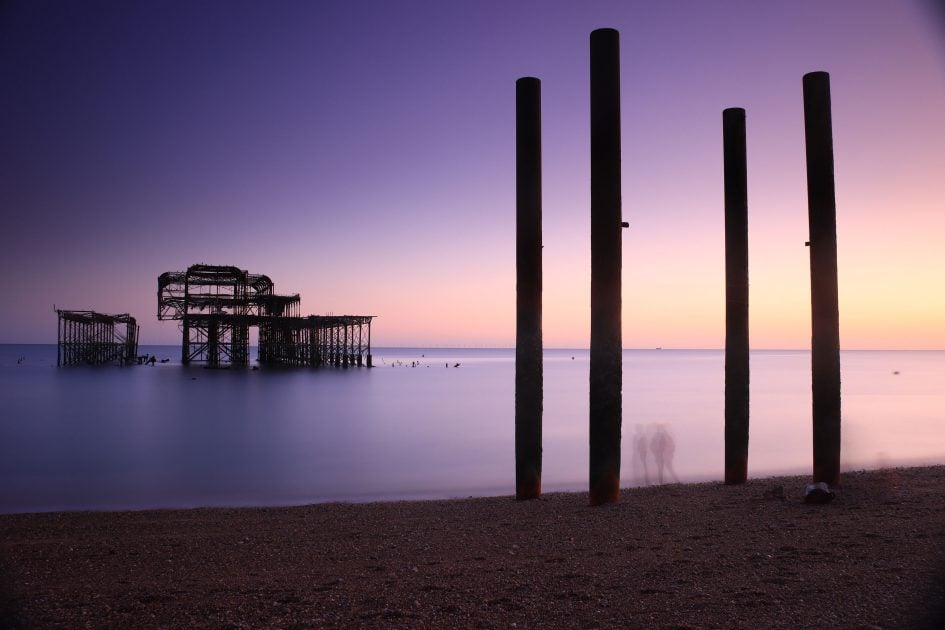
Above: There’s also a built-in interval timer for creating timelapse sequences as well as a Bulb timer to easily deploy long exposures without the need for a cable release accessory. Here’s a four minute exposure of Brighton’s West Pier taken using the Bulb timer on the M6 II without noise reduction. If you’re interested in this technique, check out my long exposure tutorial video, or my In Camera book which has lots of examples and tips on how to do it.
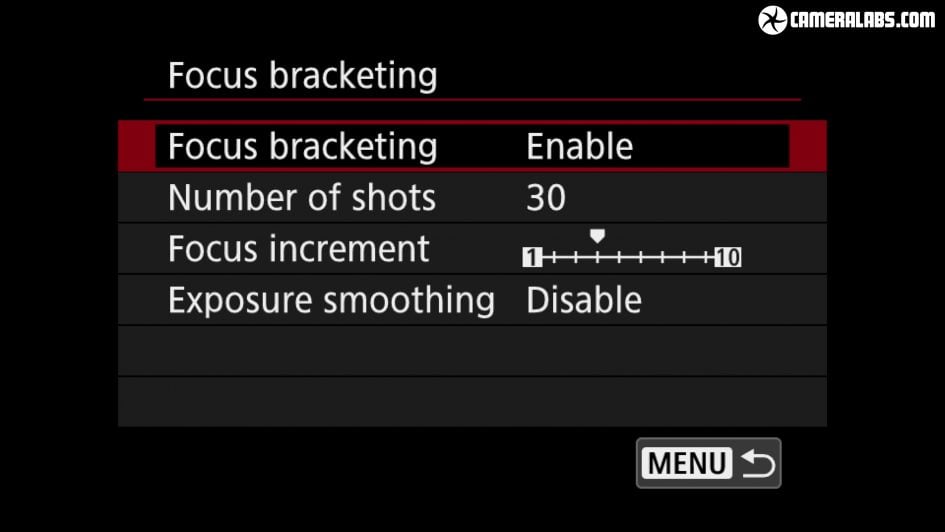
Above: Like the G7X III and G5X II, there’s focus bracketing built-in, which is great for increasing the depth of field for macro photography, although the stacking itself takes place in software on your computer. To illustrate it, I’ve positioned the AF area at the closest point I’d like in focus, before enabling focus bracketing in the menus – I found a burst of 30 frames was enough to cover the ruler with the default increment. Then just press the shutter once and the camera fires a burst, focusing slightly further with each shot. While each image only shows a couple of cm in sharp focus, it’s possible to stack them all automatically later into one fully-focused image.
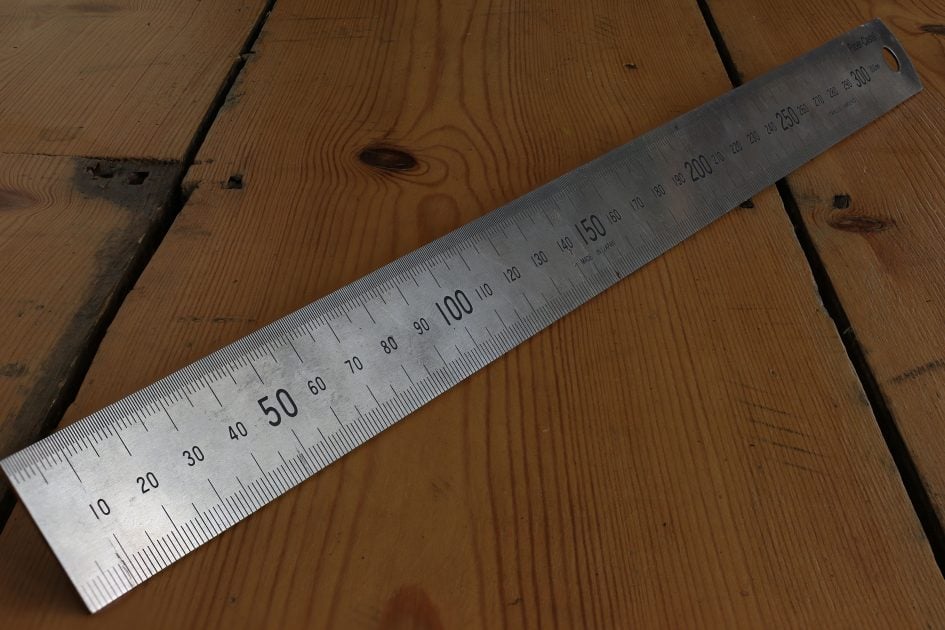
Above: You can use Canon’s supplied Digital Photo Professional to stack images, although for this example I had better success with Helicon focus. You can see in the final result how almost the entire ruler is sharp. It’s a great technique for macro photographers as closing the aperture may not achieve the desired depth of field and closing it too much can result in softening due to diffraction.

Above: Now for video. Set the video system to PAL and the M6 II can film 720 at 50p, 1080 at 25 or 50p, or 4k at 25p, all uncropped and using IPB compression with data rates of around 30Mbit/s for 1080 or 120Mbit/s for 4k. Switch the video system to NTSC and you film 720 at 60p, 1080 at 30 or 60p, or 4k at 30p. On the original release there was no 24p in any mode, but Canon’s promised it in a firmware update in 2020. The big news here though is the M6 II and 90D become Canon’s first interchangeable lens cameras to support uncropped 4k video, and I’m pleased to report with Dual Pixel autofocus too. Both key benefits over the M50 and M200 which only allow 4k with a tight crop and with basic contrast AF. In terms of maximum recording times, the M6 II can record clips lasting up to a second shy of half an hour in 1080 or 4k and should have enough for three or four of them on a full charge. But in my tests while I could record four consecutive half hour clips in 1080, the M6 II claimed to overheat and shut itself down about halfway into my second clip of 4k – so after only about 45 minutes. I say claim, as the body barely felt warm to me, but there’s no way to over-ride the shutdown and you just have to wait a few minutes for the camera to cool before it’s happy to record 4k again. To be fair, the clip length is longer than the X-T30 which only allows a mere 15 minutes of 1080 or just ten of 4k at a time, but contrast this with the Sony A6400 which can record clips beyond half an hour and seems fine about getting hot under the collar – I managed just over an hour in my tests, although the body felt very warm. And while Canon’s EOS 90D may also be limited to half hour clips, its greater bulk allowed it to film just over six of them in a row without overheating.
Above: Download the original file (Registered members of Vimeo only). You can also view or download my Canon EOS M6 II 1080p movie sample for comparison.
Above: Download the original file (Registered members of Vimeo only).
Above: Download the original file (Registered members of Vimeo only).
Above: Download the original file (Registered members of Vimeo only). The M6 II allows high speed 1080 video at 100 or 120fps which is slowed in-camera by four times; there’s no sound recorded though, nor any autofocusing during the clip, both of which are allowed by Sony. Here’s a clip I filmed using the slow motion mode and if you’re careful about the action not moving too much towards or away from you, the lack of autofocus may not be a big issue. Although when the birds fly towards me, they do of course become blurred.
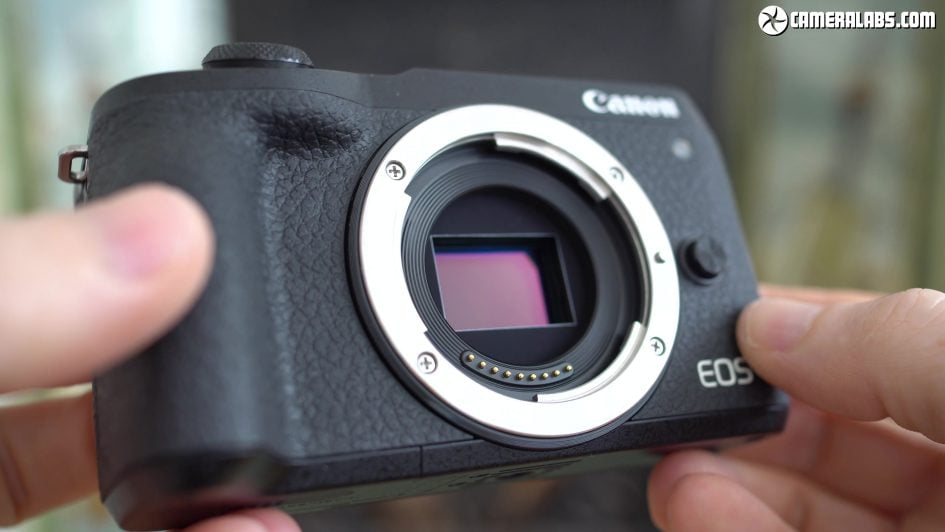
Above: Returning to the sensor, the M6 II and the 90D launched alongside it, debut the highest resolution APSC sensor to date, sporting 32.5 Megapixels – this comfortably beats the 24 Megapixel average for APSC and the 26 of Fujifilm’s latest generation. Sadly Canon continues to neglect built-in stabilisation, although to be fair its APSC rivals at this price point – the Fujifilm X-T30 and Sony A6400 – don’t have built-in stabilisation either. It’s only Micro Four Thirds that has IBIS at this price or lower.
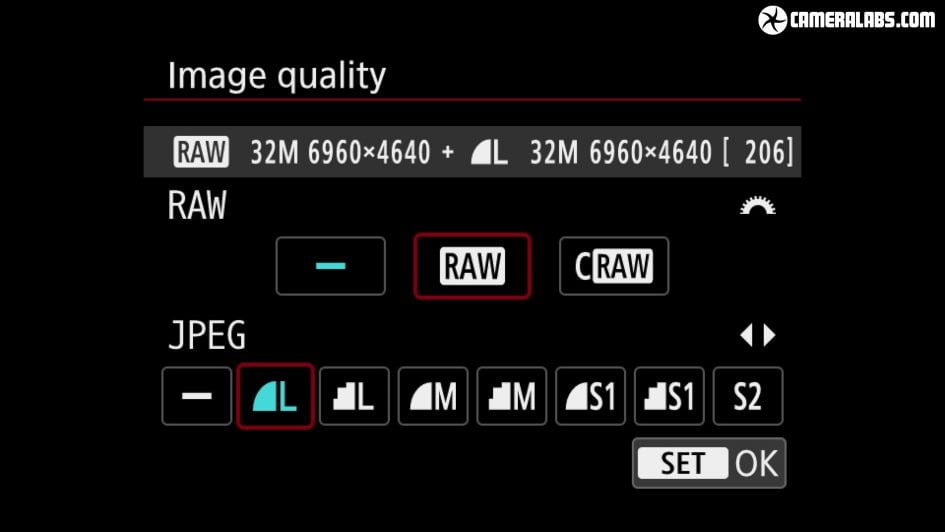
Above: The new sensor captures images with 6960×4640 pixels compared to 6000×4000 on the earlier 24 Megapixel models. This lets you make 23x15in prints at 300dpi – that’s three inches wider than 24 Megapixel images – or of course gives you more latitude for cropping which is great if you’re photographing distant subjects like wildlife.
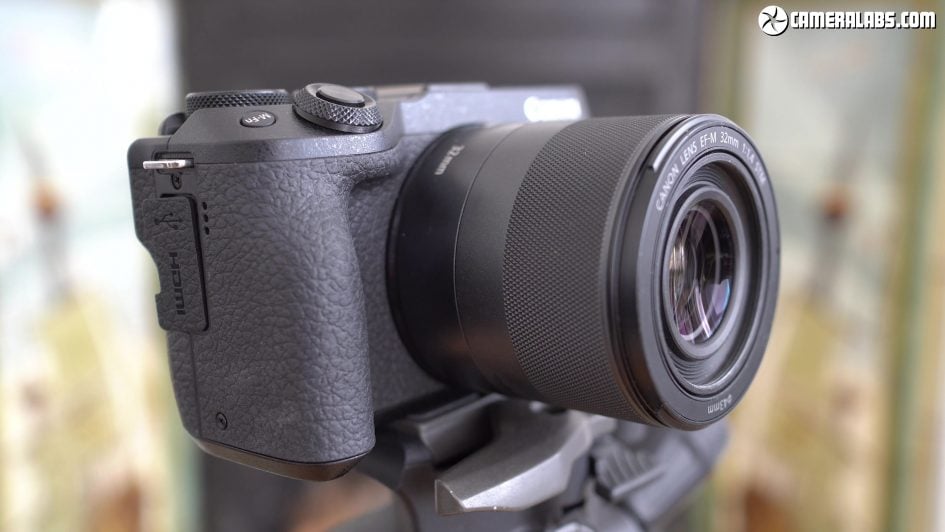
Above: The finer pixel-pitch does however place greater demand on your lenses and to exploit the full resolution you’ll need to forget the EF-M 15-45mm kit zoom and shoot with much sharper optics like the EF-M 32mm f1.4 or the best EF lenses you can adapt. Don’t kid yourself you’ll be getting the best from this sensor with average lenses.
Check prices on the Canon EOS M6 Mark II at B&H, Amazon, Adorama, or Wex. Alternatively get yourself a copy of my In Camera book or treat me to a coffee! Thanks!
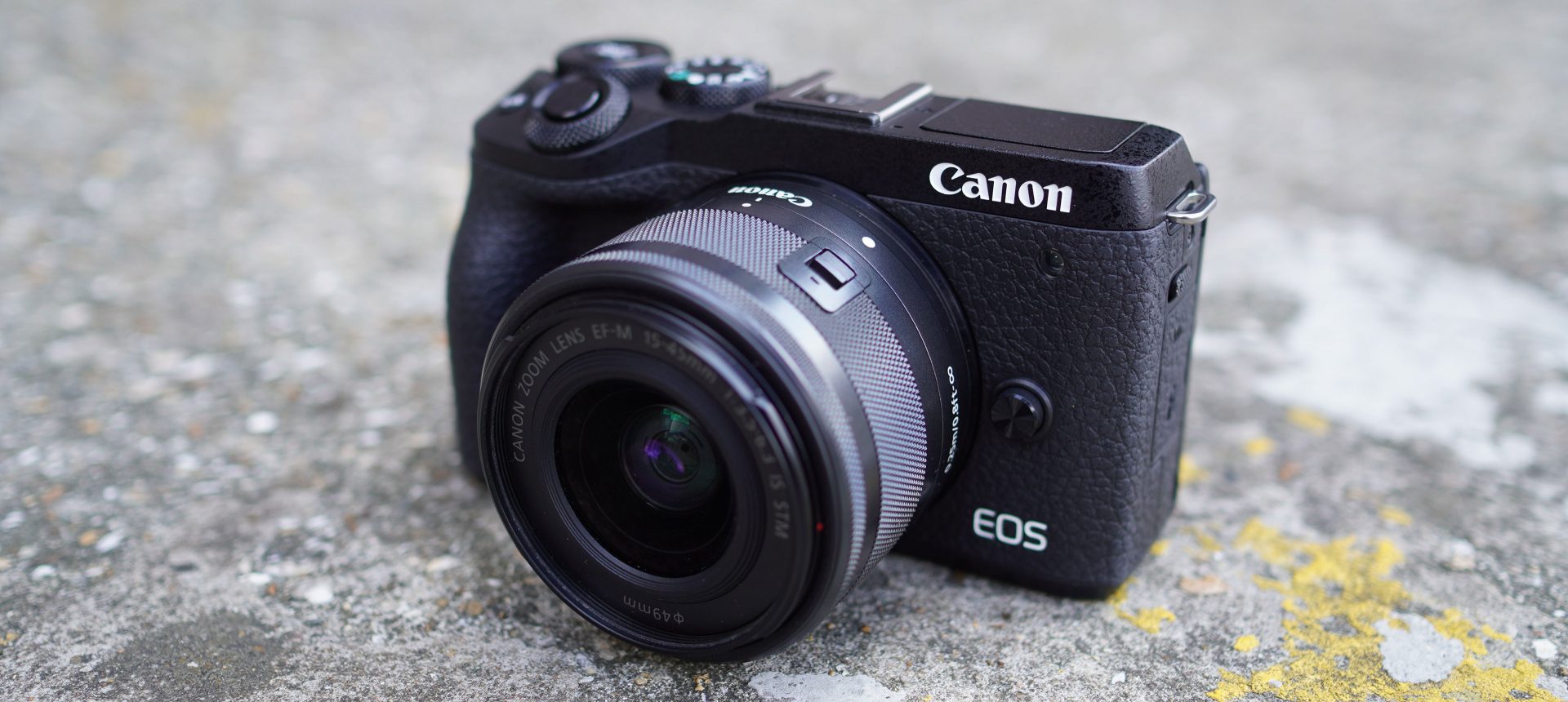
 The EOS M6 Mark II becomes Canon’s flagship mirrorless camera with an APSC sensor. The combination of a new 32.5 Megapixel sensor and DIGIC 8 processor banishes many of the annoyances of earlier Canon bodies, allowing the M6 II to shoot uncropped 4k video and 14fps bursts, both with decent autofocus. The photos can out-resolve 24 Megapixel rivals, but not by a huge margin and only when fitted with a quality lens - like the EF-M 32mm f1.4 or one of Sigma’s APSC primes. Fortunately the M6 II does a great job autofocusing adapted EF DSLR lenses, but they’re generally bigger and heavier than native models. It’s great to finally enjoy uncropped 4k with Dual Pixel AF on an EOS M body, but while it’s more detailed than 1080 footage, it’s nowhere near as detailed as 4k from the Sony A6400 or Fujifilm X-T30 and there’s no 24p in any mode. Making up for it for most people though is the confident Dual Pixel autofocus. As a mid-range model, there’s no built-in viewfinder, instead relying on an accessory, and anything you mount on the hotshoe will block the screen from flipping-up to face you. Surprisingly the EOS 90D launched alongside it is actually better-suited for video, but even stranger the M6 II is preferable for sports, action and wildlife. Ultimately the M6 II faces tough competition from the Sony A6400 and Fujifilm X-T30, both of which feature built-in viewfinders, sharper 4k video, a broader selection of native lenses and both charging and power delivery from any USB source. But the M6 II fights back with Dual Pixel autofocus, faster mechanical bursts and arguably the best grip and controls. There is no clear winner overall, so you’ll need to weigh-up their respective pros and cons, but the M6 II still has more than enough going for it to earn itself a Recommendation.
The EOS M6 Mark II becomes Canon’s flagship mirrorless camera with an APSC sensor. The combination of a new 32.5 Megapixel sensor and DIGIC 8 processor banishes many of the annoyances of earlier Canon bodies, allowing the M6 II to shoot uncropped 4k video and 14fps bursts, both with decent autofocus. The photos can out-resolve 24 Megapixel rivals, but not by a huge margin and only when fitted with a quality lens - like the EF-M 32mm f1.4 or one of Sigma’s APSC primes. Fortunately the M6 II does a great job autofocusing adapted EF DSLR lenses, but they’re generally bigger and heavier than native models. It’s great to finally enjoy uncropped 4k with Dual Pixel AF on an EOS M body, but while it’s more detailed than 1080 footage, it’s nowhere near as detailed as 4k from the Sony A6400 or Fujifilm X-T30 and there’s no 24p in any mode. Making up for it for most people though is the confident Dual Pixel autofocus. As a mid-range model, there’s no built-in viewfinder, instead relying on an accessory, and anything you mount on the hotshoe will block the screen from flipping-up to face you. Surprisingly the EOS 90D launched alongside it is actually better-suited for video, but even stranger the M6 II is preferable for sports, action and wildlife. Ultimately the M6 II faces tough competition from the Sony A6400 and Fujifilm X-T30, both of which feature built-in viewfinders, sharper 4k video, a broader selection of native lenses and both charging and power delivery from any USB source. But the M6 II fights back with Dual Pixel autofocus, faster mechanical bursts and arguably the best grip and controls. There is no clear winner overall, so you’ll need to weigh-up their respective pros and cons, but the M6 II still has more than enough going for it to earn itself a Recommendation.



